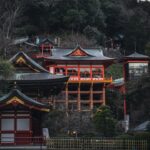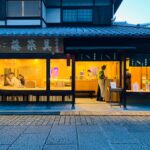Dreaming of autumn beyond the neon lights of Tokyo? Japan’s rural regions come alive in fall with a tapestry of vibrant matsuri—local festivals—most travelers never experience. This guide invites you into remote towns, sacred mountain shrines, and enchanting streets illuminated by lanterns, where community spirit, age-old rituals, and authentic flavors blend for immersive memories. Prepare to journey off the beaten path and discover why autumn in rural Japan is truly unforgettable.
What Are Hidden Rural Autumn Matsuri? Exploring History and Cultural Origins
While Japan’s grand festivals like Kyoto’s Gion Matsuri attract thousands, the true heart of matsuri culture beats in the countryside. Rooted in Shinto and Buddhist beliefs, rural autumn matsuri have centuries-old histories, often linked to harvest celebrations, local deities, or the changing seasons. Villagers gather to thank the gods for their bounty and pray for coming prosperity, preserving traditions and connecting generations. These festivals are shaped by their locales, each carrying unique customs, music, foods, and rituals echoing the region’s identity.
Hidden Gems: Unique Regional Autumn Festivals in Tohoku and Takayama
Escape the crowds and witness autumn matsuri few outsiders ever see. In the Tohoku region, the Kakunodate Matsuri (Akita Prefecture) features dynamic floats and samurai performances against a backdrop of fiery maple trees and rustic streets. The Nishimonai Bon Odori in Ugo, held under the harvest moon, has villagers donning hand-crafted hats and dancing through rice fields—a hauntingly beautiful sight. Far to the west, Takayama’s Autumn Festival is famed for its ornate yatai floats, marionettes, and lantern processions winding through Edo-period alleys, radiating an old-world magic. Each locale brings its personality: expect local crafts, mountain-inspired cuisine, and genuine hospitality.
Experiences Unique to Rural Matsuri: Lanterns, Robes, and Shinto Rituals
One step into a rural matsuri and you’re enveloped by floating lanterns, rhythmic drums, and the scent of incense drifting from a local shrine. Don’t just observe—join villagers as they slip into vibrant happi coats or yukata, carrying mikoshi (portable shrines) and chanting through torch-lit paths. Unique rituals abound, such as rice-offering ceremonies, sacred kagura dance, or even fire-leaping rites for good harvests. Far from tourist-packed spectacles, you can chat with shrine priests or try hands-on activities like paper lantern making or dressing in festival attire—perfect for unforgettable travel photos.
Deep Connections: Food, Music, Craft, and Community at the Matsuri
The core of any rural matsuri is its people. Stalls brim with local specialties—grilled ayu river fish, sticky kiritanpo rice skewers, wild mushroom soup, and freshly pressed sake. Celebrate shoulder to shoulder with farmers, artists, and musicians as folk melodies and taiko drums pulse through the air. Often, community members showcase local arts—calligraphy, woodblock prints, or indigo dyeing—inviting visitors to join workshops. These human connections, made on lantern-lit streets and shrine grounds, turn matsuri moments into lifelong memories and cross-cultural friendships.
How to Visit: Access, Travel Tips, and Making the Most of Your Rural Matsuri Adventure
Ready to set out? Many rural matsuri happen in small towns reached via scenic train rides or local buses—think winding railways past rice paddies and glowing forests. Tip: Plan accommodations and travel in advance, as smaller towns may book up quickly during festival season. Learn a few basic Japanese phrases to enrich your interactions, and be respectful of shrine spaces and photography rules. Bring cash—market stalls and local inns may not accept international cards. Finally, travel with curiosity and patience: the slower pace, personal invitations, and authentic encounters are the real reward. By venturing beyond Tokyo this autumn, you’ll return not just with photos, but with stories only the most intrepid travelers know.








